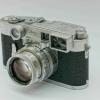Leica CL Leica CL as main camera
-
Recently Browsing 0 members
- No registered users viewing this page.
-
Similar Content
-
- 25 replies
- 1,666 views
-
- 132 replies
- 17,812 views
-
- 8 replies
- 447 views
-
- 17 replies
- 5,143 views
-
- 2,837 replies
- 171,648 views
-






Recommended Posts
Join the conversation
You can post now and register later. If you have an account, sign in now to post with your account.
Note: Your post will require moderator approval before it will be visible.